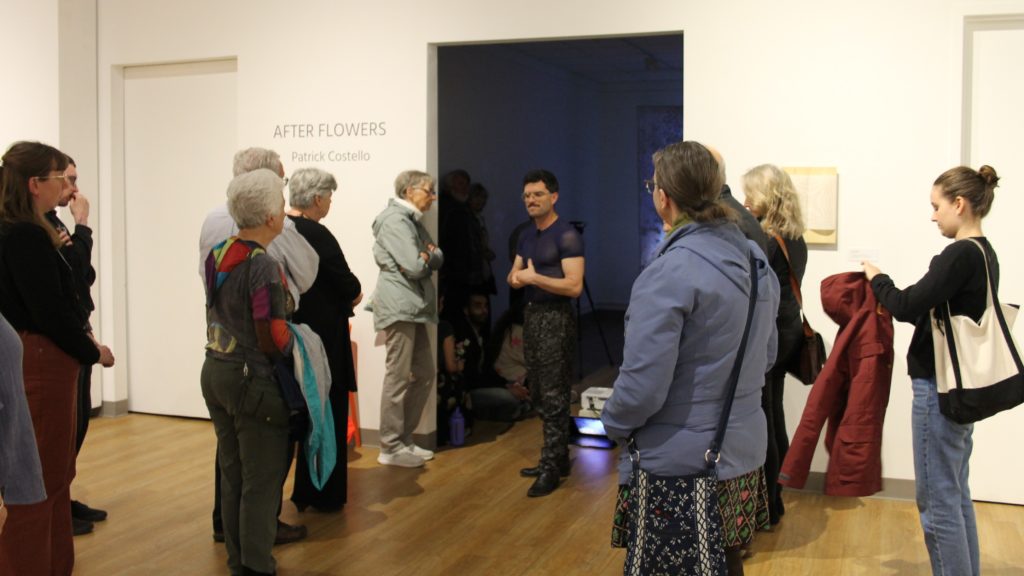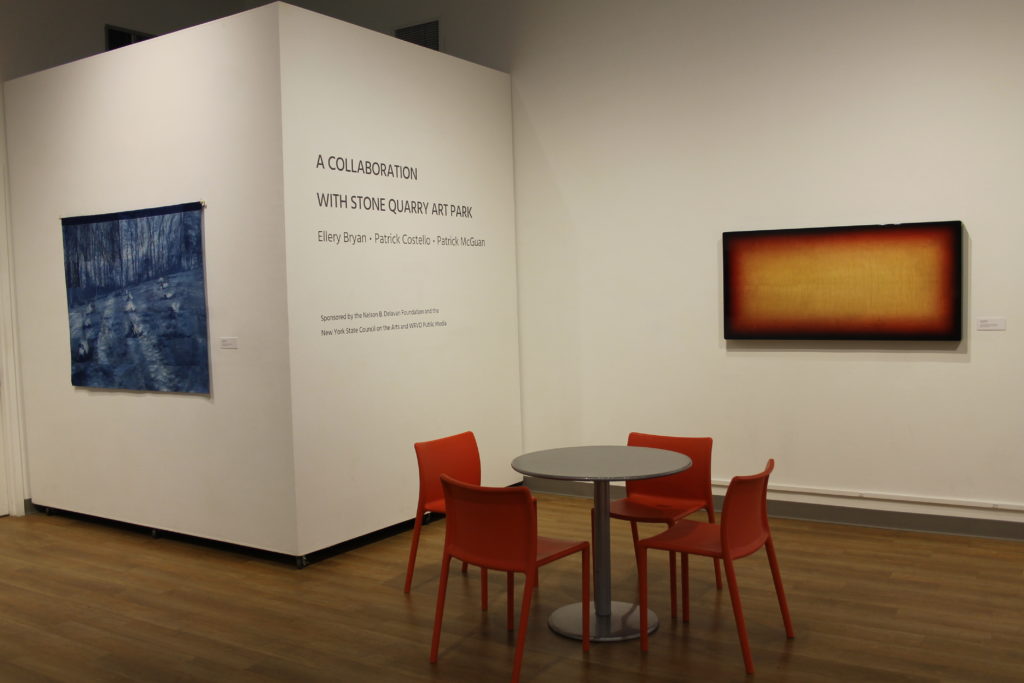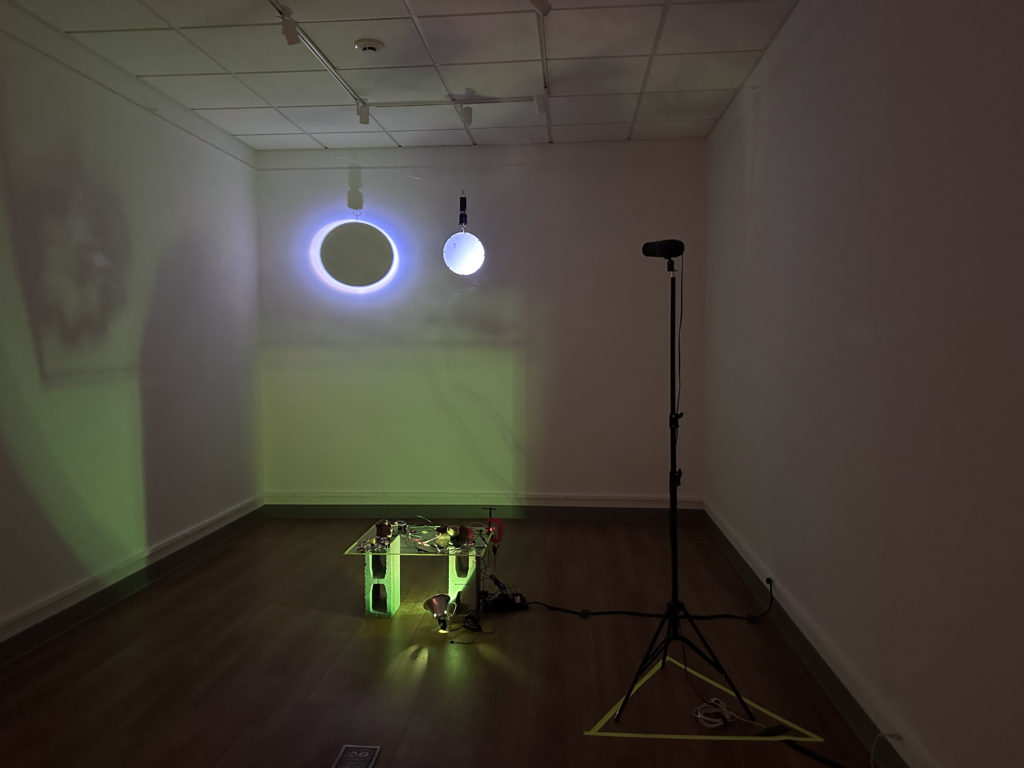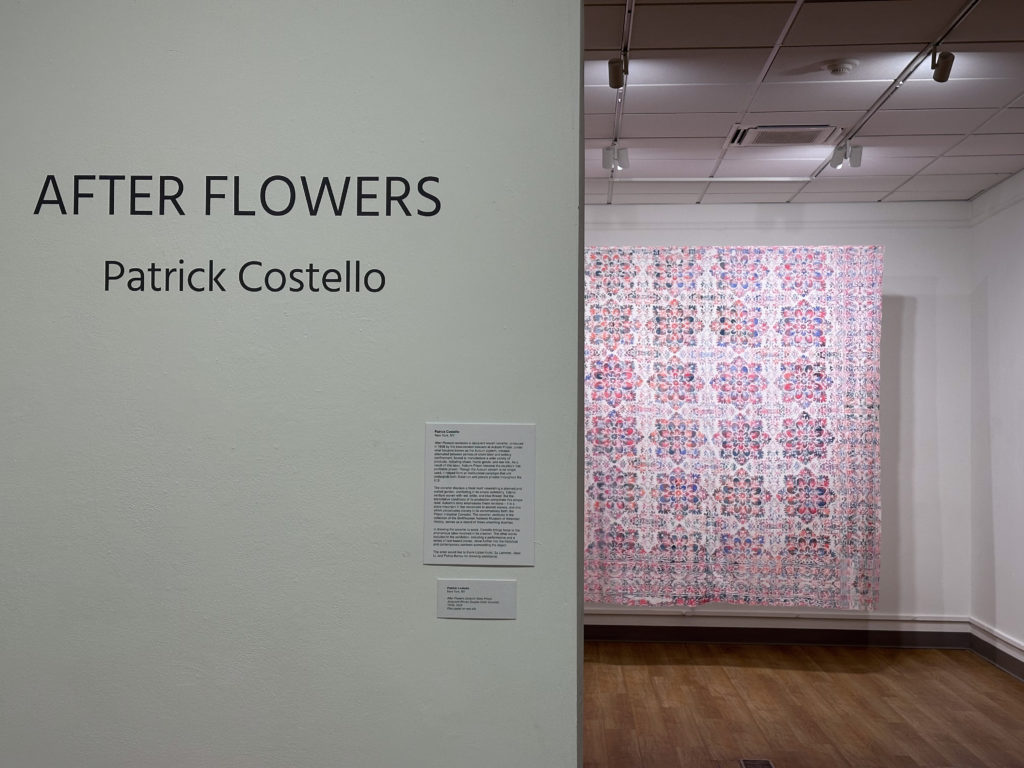Schweinfurth, Stone Quarry Art Park collaborate on 3 exhibits

Artists address complicated environmental and cultural issues
AUBURN, NY (July 8, 2025) – Schweinfurth Art Center in Auburn and Stone Quarry Art Park in Cazenovia collaborated this summer to create three exhibits that share themes around the rich and complicated histories contained with materials, landscapes, and nature.
“We were excited to collaborate with the Schweinfurth because our organizations share a commitment to broadening public access to the arts and increasing opportunities for artists in our region and beyond,” said Sayward Schoonmaker, artistic director at Stone Quarry.
“Because Stone Quarry’s programming focuses on inviting artists to bring their art practices to the outdoors,” she continued, “we saw the collaboration with the Schweinfurth as a wonderful opportunity to invite these three artists … to extend their landscape-driven explorations into the gallery setting.”
Stone Quarry Art Park is a private, not-for-profit, 104-acre contemporary outdoor art space founded in 1991 that focuses on the intersection of art and land. Park founder artist Dorothy Riester called the park “not an outdoor museum of sculpture placed statically in a landscape setting, but rather an ever-changing partnership between the artist and environment.”

All three artists who have installations at the Schweinfurth have connections to Stone Quarry. Patrick Costello, whose exhibit “After Flowers” examines a textile that is beautiful and contains troubling origins, was a 2023 Visiting Artist at the art park. Ellery Bryan, whose exhibit “Fossil Memory” references last year’s solar eclipse as it approaches collective grieving with a relationship to land marked by histories of extractive industries, is a 2024-2025 Affiliate Artist. And Patrick McGuan, whose exhibit “Songs from the Sky” engages with disturbed landscapes that sing both of grief and regrowth, is the art park’s 2025 Visiting Artist.
“One of the most important things that art can help us do in conservation is help show people that things that may seem counterintuitive, that may seem bad for nature, like fire or like clearcutting certain areas of a forest, might actually be what’s good for nature,” said Sam Quinn, director of Conservation on Private Lands Initiative at SUNY’s College of Environmental Science and Forestry and a volunteer with the art park’s Land Advisory Committee, during a panel discussion with the artists at the shows’ opening.
“If you want to measure this, maybe we get more desirable species and stronger populations of those species that can sustain themselves,” he continued. “These are the ways we quantify what is good and bad in conservation. And artists can help us tell that story in ways that I can’t.”
When artist Patrick McGuan heard about Stone Quarry Art Park clearing a patch of ash trees that were infested with the emerald ash borer, he knew he had to create artwork around that. Several pieces in “Songs from the Sky” touch on that, including “In the Dry (Murmurations)” and “In the Dry (The Harvest Call).”
“Murmurations” fills a small room off the Schweinfurth’s main gallery with a television on one end and a grandfather clock looking device on the other. The clock houses analog broadcast antennae that send a looping video of starlings flying in a murmuration to the TV, and a viewer’s movement through the signal’s path in the room can make the video phase in and out of static. The clock is made from ash wood, and the open door contains evidence of borers’ journey.
“The Harvest Call” comprises two stitched together cyanotype images of gridded bonfires on the Stone Quarry hillside that had been cleared of diseased ash trees. McGuan organized this first series of fires during this year’s spring break from teaching sculpture at Hastings College in Hastings, Nebraska. Following his June 12 Artist’s Talk at the art park, he organized another burning that was accompanied by chorale singers and visitors walking up and down the hill between the fires.
“I think artwork is a way to define emotional and sensorial knowledge and provide an embodied experience that will allow you to sort of dwell in complexity and contradiction, which is something that I share with the other exhibiting artists,” McGuan said during the panel discussion.

“You’ll notice that a good part of my artwork is traditional woodworking,” he continued. “When I was getting started with it, I used a lot of ash. It was inexpensive at the time because a lot of people were cutting their trees because they were dying off from the ash borer.”
Artist Ellery Bryan of Baltimore begins and ends their film “My Body is a Lens I Can Look Through With My Mind” – part of their “Fossil Memory” exhibition at the Schweinfurth – with the 2024 solar eclipse. They use planetary movements, geological records, objects, and sound as jumping-off points for memory and subjectivity.
“Throughout this year, I’ve been thinking a lot about memory and about closeness and my relationships with other people in my life,” they said. “So this work has really come out of thinking about what it means for me to remember or imagine something. Basically, the thing that I’m exploring is the way that memory is constructed and meaning is constructed, and how that can be a really beautiful thing.”
“Total eclipse,” one of Bryan’s pieces in “Fossil Memory,” uses a mirror, disco ball motor, and an LED spotlight to create a faux solar eclipse that recurs in seconds rather than the average of 18 months in nature. They found the event very emotional, more than they expected.
Bryan is also acutely aware of the impact their art making has on the environment. They note that analog film is made of plastic and silver halide, the latter of which is mined in a violent and extractive method similar to the processes that created the abandoned quarry where they shot their film.
“Essentially, as I am making my work, which gets to be really beautiful and poetic because that’s the type of thing I feel drawn to make, it also has a legacy of violence and extraction in the making of that material,” they said during the panel discussion. “That can be difficult for me to square and justify when thinking about the impact my medium has on the planet.”
During his tenure at Stone Quarry, New York City artist Patrick Costello built “And Eat It Too,” a tower of hay bales; indigo dyed silt socks filled with elephant dung, straw, and wood chips; and regional plants. The piece continues to decay as it slowly composts and introduces native plants to the landscape.
“For a while I was like, ‘Every piece of art I make needs to compost,’” he said during the panel discussion. “It needs to create new meadows. It needs to be involved in these cyclical processes that burning enables, that composting enables. And at some point, I was like, ‘Oh, that’s a lot to put on art.’”

His piece at Schweinfurth Art Center focuses on Auburn’s history. “After Flowers (Auburn State Prison Jacquard-Woven Double-Cloth Coverlet)” is a wax pastel drawing on raw silk that recreates the pattern of a coverlet made by inmates at Auburn prison in 1838. “The coverlet initially interested me because it depicts a garden,” Costello said. “I’m interested in gardens in my practice more generally because they are sites of both care and beauty, but also of control. I’m interested in that tension.”
He was also drawn to the dichotomy of Auburn as a place where the abolitionist movement took hold and today’s prison culture was born. “Striped uniforms were instituted at Auburn Prison, the first death by electrocution, and it was the first penal system that that resulted in profit,” Costello said. “The prisoners were producing everything from silk to metalwork to woven goods on Jacquard looms. I was interested in Auburn as both a site of abolition and a site of the continuation of slavery through the prison industrial complex.”
In this piece, Costello also maintains his interest in compostable materials: The silk used for “After Flowers” breaks down and composts very quickly.
The three exhibits are on display at Schweinfurth Art Center through Aug. 16, 2025. The exhibits are supported by the Nelson B. Delavan Foundation, WRVO Public Media, and the New York State Council on the Arts.
If you go …
WHAT: Three exhibits in collaboration with Stone Quarry Art Park
WHO: “Fossil Memory” by Ellery Bryan, “After Flowers” by Patrick Costello, and “Songs from the Sky” by Patrick McGuan
ALSO ON DISPLAY: “Imprinted on Cloth” featuring four fiber artists and “REST STOP by Julia J. Wolfe
WHERE: Schweinfurth Art Center, 205 Genesee St., Auburn
WHEN: 10 a.m. to 5 p.m. Wednesdays through Saturdays and 1 to 5 p.m. Sundays through Aug. 16, 2025
COST: $10 for admission to the Schweinfurth; $15 for admission to Schweinfurth and Cayuga Museum of History & Art
EVENT: Closing reception 4 to 7 p.m. Aug. 16, 20205, featuring a farewell reception for retiring Schweinfurth Executive Director Donna Lamb
EXTRA: Videos of the panel discussion and all three artists are available on the Schweinfurth’s YouTube channel, @schweinfurthart
